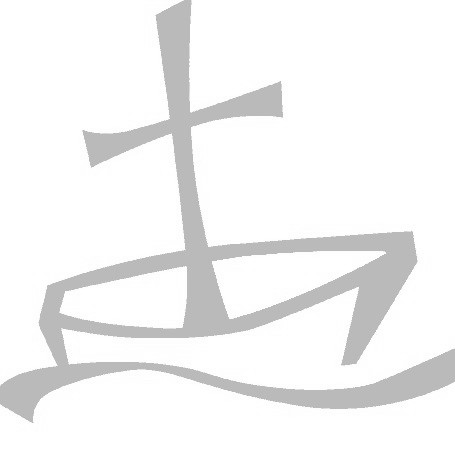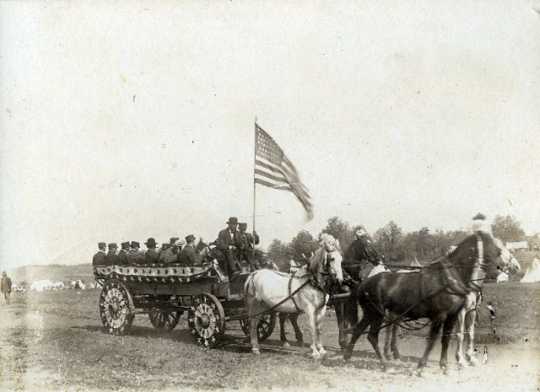Indigenous organization seeks church partners for truth telling, healing around Indian boarding school trauma
(Crossposted with permission from the Healing Minnesota Stories blog)
Part of an ongoing series on healing and reparations
Can you remember when you were 8 years old, somewhere around third grade? Put yourself in that frame of mind.
Imagine adults you don’t know come to your door. They grab you and take you away from your family. Your parents are distraught, weeping and seem powerless. You don’t know what’s going on.
You are taken to a place you have never been before. Nothing is familiar. You are immediately scrubbed with lye soap as some aggressive adult snaps about “filthy savages” to no one in particular.
You are forced to have your hair cut, wear weird cloths, and eat unfamiliar food. There’s never enough food. You frequently are hungry.
You get punished for speaking the language your parents taught you. You get punished for praying the way your parents taught you. Sometimes you’re locked in a closet, other times whipped. There is no one to protect you. Some children you know suffer much worse abuse. You live in fear you could be next.
You are deeply homesick. When (or if) you get to go home, it’s hard to fit in. You feel angry. Why did this happen? You don’t want to talk about it; it feels too embarrassing.
Your school experience has left you feeling neither lovable or valued. You lack confidence, suffer depression, and even think of taking your own life.
Many, many Indian children suffered such deeply traumatic experiences in Indian boarding schools. The harm permeated through their families and communities. They, too, suffered a crippling mix of hurt, anger, and despair. That pain got passed down through generations. When Indian boarding school children grew up and started families of their own, they were ill equipped. They never learned how to be good parents.
How does a child heal from that? How does a community heal from that?
Christine Diindiisi McCleave heads the Minneapolis-based National Native American Boarding School Healing Coalition (NABS). The organization’s mission is “To lead in the pursuit of understanding and addressing the ongoing trauma created by the U.S. Indian Boarding School policy.”
This year, the coalition is launching a new outreach effort, including outreach to Christian and Catholic churches who were involved in operating boarding schools.
“We just want them to enter into relationship with us,” McCleave said. “We want them to join the movement, join the coalition. It’s free to become a member. That’s the starting point.”
At the same time, the conversations will be painful.
“This was a federal policy that was genocidal,” McCleave said. “Churches are not only complicit, they were participants.”
Is your Catholic church or Protestant church or denomination interested in learning more about the Native American Boarding School Healing Coalition?
Sign up for its newsletter here. Its website also has many resources, including its Truth and Healing Curriculum and its Healing Voices Blog.
Questions? Contact: Vance Blackfox, Director of Public Relations, at vblackfox@nabshc.org
Vance Blackfox, NABS’ director of public relations, is heading up the church partnership effort.
“We are looking to build good and healthy relationships with all of our church bodies in the United States, who would prayerfully assist us with reaching broader audiences and educating their members – the people in the pews – about the history of Indian boarding schools as well as the opportunities that exist for us to do some healing work together,” he said.
Church involvement by the numbers
NABS has done years of research to create an authoritative list of U.S. Indian boarding schools; it’s still a work in progress. McCleave said her organization filed a Freedom of Information Act Request with the government seeking a list of the boarding schools, the number of student who attended them, and how many students died there.
The Bureau of Indian Affairs (BIA) said it couldn’t answer those questions. It said: “‘We don’t know the answers because we don’t do research,’” McCleave said. “The records are spread out all across the United States in federal archives. Even then they don’t have them all. Some are in church archives, state archives, private collections. The records are spread out all over the place.”
According to what NABS has assembled so far, 367 Indian boarding schools operated in 29 states, either run by the federal government or churches. Fourteen church bodies ran 146 Indian boarding schools. Here’s the breakdown:
- Catholic (80)
- Presbyterian (21)
- Quaker (15)
- Methodist (12)
- Episcopal (9)
- Baptist (4)
- Jesuit (4)
- Dutch Reform (2)
- Evangelical (2)
- Mennonite (2)
- Protestant (2)
- Anglican (1)
- 7th Day Adventist (1)
- Unitarian (1)
NABS’s has found 16 Indian boarding schools in Minnesota. To see the full national list, click here. (Healing Minnesota Stories did an Internet search to add a few links for more information.)
- Cass/Leech Lake
- Clontarf Industrial School, For more, click here.
- Graceville Convent of our Lady of the Lake, For more, click here.
- Cross Lake School: For more, click here.
- Morris Industrial School for Indians. For more, click here.
- Pine Point
- Pipestone Indian School
- Red Lake
- St. Benedicts Orphan School (St. Joseph’s Academy)
- St. Francis Xavier Industrial School
- St. Mary’s Mission, White Earth
- St. Theodore’s School
- Vermilion Lake Indian School. This school succeeded because it had Indian staff, according to an article in Minnesota History Magazine. For more, click here.
- White Earth Boarding School
- Wild Rice River
Quaker case study
In 2015, NABS put out a call for churches to undertake research into their own involvement in the boarding school era. It would be a first step to healing.
They had a number of responses, McCleave said. Paula Palmer from the Boulder, Colo. Friends Meeting was among the first.
Palmer learned that Quakers had been instrumental in creating church-run Indian boarding schools.
“They proposed the policy that became known as the Grant administration’s ‘Peace Policy‘ or ‘Quaker Policy.’” according to the Boulder Friends website. “The goals of this policy were to replace the government’s corrupt Indian agents with religious men who would oversee management of the reservations, convert the Native people to Christianity, and settle them into farming lifestyles like those of European Americans.”
The Grant administration put Hicksite Friends in charge of six reservations with populations totaling 6,598 people. Orthodox Friends managed ten Indian agencies whose populations totaled 17,724 people. Other Christian denominations managed 56 additional reservations during Grant’s presidency.
Church involvement in managing Indian boarding schools would grow under future presidents.
Palmer began developing educational materials for Quakers in partnership with Jerilyn DeCoteau, a member of the Turtle Mountain Chippewa and then NABS board chair.
Palmer would go on to write Quaker Indian Boarding Schools: Facing Our History and Ourselves. The article includes quotes from adult Indians who went through boarding school.
One woman recalled being 8 years old. “I felt the cold blades of the scissors against my neck, and heard them gnaw off one of my thick braids. Then I lost my spirit. . . . Our mothers had taught us that only unskilled warriors who were captured had their hair shingled by the enemy. Among our people, short hair was worn by mourners, and shingled hair by cowards!”
For more on the the Indian Boarding School Era educational materials developed for Quakers, click here.
Children suffered much worse than haircuts. Mary Annette Pember wrote the article Death by Civilization for The Atlantic about her mother’s boarding school experience. Her mother suffered “beatings,” “shaming, and the withholding of food.”
“Food and medical attention were often scarce; many students died,” Pember wrote. “Their parents sometimes learned of their death only after they had been buried in school cemeteries, some of which were unmarked.”
As for Pember’s mother:
Hypervigilance, defensiveness, resentment, and a hair-trigger temper had been her only allies against the Sister School messages of racial inferiority, daily reminders that Natives were primitive beings unlikely to rise above the role of servants in a white man’s world. She raged against the nuns’ label “dirty Indian,” haunted by the fear that the nuns were right, even as she scrubbed miles of floors and performed hours of heavy manual labor.
Death by Civilization, The Atlantic
Palmer writes that through both “painful testimony” and “scientific research, we know how trauma can be passed from generation to generation. The multigenerational trauma of the boarding school experience is an open wound in Native communities today.”
It’s long overdue for faith traditions that participated in this trauma to find ways to support the healing.
The Minnesota Council of Churches has launched a multi-year effort at truth telling, education, and reparations with Indigenous and African American communities. This blog is part of a series to support that work.







